Picking the Right Carpet Flooring Pattern
Carpet Flooring Styles (pattern)
The style and pattern of carpet flooring refers to a carpet’s surface characteristics and appearance. The size, color, shape, density, arrangement, proportion, and other graphical parameters are the elementary parts of carpets style and pattern.
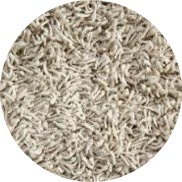 Frieze: Frieze carpeting is one of the most popular carpet styles in the United States. One of the primary reasons that frieze carpets remain popular is that they have trackless carpet styles, meaning that the carpet does not hold footprints or vacuum cleaner sweeper marks. Although some Frieze carpets do leave marks, they still hide footprints better than other carpet flooring styles.It is important that you distinguish between original frieze style carpets and textured or trackless carpet styles, which are sometimes sold as Frieze carpeting. Some carpet wholesalers assume that you want trackless carpet when you asks for Frieze carpet flooring, and may give you one of 20 trackless carpet styles instead of the original Frieze style, so make sure your are as specific as possible when purchasing your carpeting. Frieze carpet has an extremely high carpet twist level, measured by twist per inch. For example, most carpet styles have 3 to 5 twists per inch, while a Frieze carpet may have 7 to 9 turns per inch. A high carpet twist level can result in the carpet kinking or turning, causing the carpet to have a curled look. In terms of cost, original Frieze carpet usually costs more than trackless carpets, but performs better in terms of maintaining it’s texture under heavy foot traffic. When calculating the cost per year, it’s important to note that although purchasing a Frieze carpet floor requires more initial investment, they last much longer than other styles, eliminating the need to replace them as you would do with weaker styles of carpet floors.
Frieze: Frieze carpeting is one of the most popular carpet styles in the United States. One of the primary reasons that frieze carpets remain popular is that they have trackless carpet styles, meaning that the carpet does not hold footprints or vacuum cleaner sweeper marks. Although some Frieze carpets do leave marks, they still hide footprints better than other carpet flooring styles.It is important that you distinguish between original frieze style carpets and textured or trackless carpet styles, which are sometimes sold as Frieze carpeting. Some carpet wholesalers assume that you want trackless carpet when you asks for Frieze carpet flooring, and may give you one of 20 trackless carpet styles instead of the original Frieze style, so make sure your are as specific as possible when purchasing your carpeting. Frieze carpet has an extremely high carpet twist level, measured by twist per inch. For example, most carpet styles have 3 to 5 twists per inch, while a Frieze carpet may have 7 to 9 turns per inch. A high carpet twist level can result in the carpet kinking or turning, causing the carpet to have a curled look. In terms of cost, original Frieze carpet usually costs more than trackless carpets, but performs better in terms of maintaining it’s texture under heavy foot traffic. When calculating the cost per year, it’s important to note that although purchasing a Frieze carpet floor requires more initial investment, they last much longer than other styles, eliminating the need to replace them as you would do with weaker styles of carpet floors.
(Cost: Minimum: $2.00/Sq. Ft.; Maximum: $3.50/Sq. Ft.)
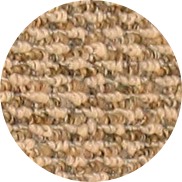 Berber: The word «berber» can have multiple meanings, not only for you but also to some industry professionals. Luckily, there is no wrong way to use the term Berber once you understand it. The term Berber originated back in history, when people of North Africa, called the Berbers, created hand woven textiles. Today Berber is used to describe a loop carpet, which is a type of construction that where the yarn is sewn, or tufted, into the carpet backing and left uncut. There are some variations in the loops, such as the high level of the loop, which can create leveled loops or varying highs.
Berber: The word «berber» can have multiple meanings, not only for you but also to some industry professionals. Luckily, there is no wrong way to use the term Berber once you understand it. The term Berber originated back in history, when people of North Africa, called the Berbers, created hand woven textiles. Today Berber is used to describe a loop carpet, which is a type of construction that where the yarn is sewn, or tufted, into the carpet backing and left uncut. There are some variations in the loops, such as the high level of the loop, which can create leveled loops or varying highs.
(Cost: Can range from $1.50 to $10.00 per sq. ft., depending on the material.)
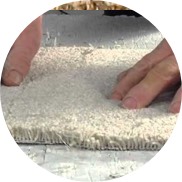 Plush: Plush carpet flooring is a soft, dense, luxurious flooring solution. Plush carpets fall under the category of cut-pile type carpeting, featuring fibers that are shared evenly, resulting in a smooth surface. The diversity of plush carpets offers consumers a wide range of colors and patterns, making plush carpets a great solution almost for any room in your home. Plush carpets made from regular materials cost from $1.22 / sq ft to $1.56 / sq ft.
Plush: Plush carpet flooring is a soft, dense, luxurious flooring solution. Plush carpets fall under the category of cut-pile type carpeting, featuring fibers that are shared evenly, resulting in a smooth surface. The diversity of plush carpets offers consumers a wide range of colors and patterns, making plush carpets a great solution almost for any room in your home. Plush carpets made from regular materials cost from $1.22 / sq ft to $1.56 / sq ft.
Discounted Plush carpets can cost $0.78 / sq ft to $0.98 / sq ft. and luxury premium plush carpets cost ranges from $1.68 / sq. ft to $2.14 / sq ft. Plush carpets with special design and high quality materials can cost from $1.86 / sq ft. to $2.36. / sq ft. The extreme popularity of plush carpet flooring in the United States is due to its numerous advantages, like great comfort at an affordable price. Due to the softness of the structure, additional padding beneath the carpet is often not needed, saving you even more on costs. Another advantage of plush carpet is its easy maintenance thanks to the protective chemicals used during the manufacturing of the carpet. The chemicals used in producing plush carpeting cause them to be highly resistant to stains and protected from other kinds of dirt, making the carpet very easy to clean. There are very few disadvantages associated with plush carpeting. Really, the only huge drawback of plush carpets are their tendency suffer tracks left behind by footsteps or vacuuming. Also, plush carpets can be made from different fabric materials—the pile can be natural, synthetic, or a blend of several fibers, such as those listed above in the “materials” section—and each material has it’s advantages and disadvantages which you should consider before making a carpeting choice. For most homeowners, the advantages of plush carpet far outweigh the disadvantages, which is why plush carpeting remains such a popular choice in homes across the country.
($1.22/ Sq. Ft. to $2.36/ Sq. Ft.)
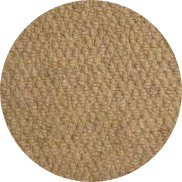 Cut Pile Carpet: Cut pile carpet means that the piles were cut and the yarns set straight. In general, all carpets begin as loop carpets, with the option to cut the pile and straighten the yarns coming later in the production process. Cut pile carpet structure allows yarns to change direction if you swipe with your arm on the carpet. In addition, the architecture of the cut pile carpet yarns allows them to change light reflection and color if the pile direction is shifted. There are different levels of density for each cut pile carpet, and the higher the density, the higher the color change when yarns change direction.
Cut Pile Carpet: Cut pile carpet means that the piles were cut and the yarns set straight. In general, all carpets begin as loop carpets, with the option to cut the pile and straighten the yarns coming later in the production process. Cut pile carpet structure allows yarns to change direction if you swipe with your arm on the carpet. In addition, the architecture of the cut pile carpet yarns allows them to change light reflection and color if the pile direction is shifted. There are different levels of density for each cut pile carpet, and the higher the density, the higher the color change when yarns change direction.
Popular cut piles styles include the previously discussed plush and frieze carpeting. Cut piles carpets are better for houses with pets or children due to their relatively better durability and safety, which is a result of cut pile carpeting's lower propensity for snagging. In terms of durability, cut pile carpets are not all that dissimilar from loop pole or other carpeting types, mostly due to the fact that cut pile carpets have a wide range of manufacturers, materials, and other factors that affect carpet floor durability. Cut Pile Carpets are more rarely used than other types. It’s price usually based on pre-cut order and it cost 10%-15% more than other types.
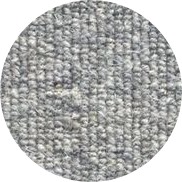 Loop pile carpet: As the name suggests, loop pile carpets have uncut piles and circle shaped yarns. There are three main types of loop pile carpet: level loop, textured loop, and multi-level loop.
Loop pile carpet: As the name suggests, loop pile carpets have uncut piles and circle shaped yarns. There are three main types of loop pile carpet: level loop, textured loop, and multi-level loop.
Price is same as barber and cost range from $1.50 to $10.00 per sq.ft.
- Level Loop: Level loop carpet consists of loops which arranged at the same height. The main advantage of a level loop pile carpet is smooth and homogenous surface; the downside can be that loop pile carpets with a low density can suffer pile dispersion over time, forcing the loops farther apart and creating a soft texture with less cushion. Loop pile carpets are mostly used for commercial spaces like offices, halls, stores, and some residential constructions.
- Textured Loop: Textured loop carpets consist of loops which are arranged at different heights, creating different textures and patterns for the carpet. Loops can vary in size and color, resulting in a colorful pattern of textured loops. Due to their aesthetic diversity, textured loop carpets are commonly used in United States homes.
- Multilevel Loop: Mostly similar to the textured loop, with exception that height variations are far more dramatic, providing deep, easily visible patterns with or without color enhancements.
While loop pile carpets have traditionally provided the best performance, they have limited appeal for most homeowners because of their low profile and reduced cushioning. Although loop pile products have the capability of providing higher performance levels, newer constructions utilize large loops, lower densities, and fiber systems that do not provide the performance levels typically expected from classic loop pile products. (See performance factors) While these fiber systems do provide diminished performance in some categories, they offer superior performance in other categories, such as stain resistance. (See fiber types).
Cut and Loop Carpet: These type of carpets combine loop pile carpet and cut pile carpet
Some carpets will have both cut and loop sections, which allows for some really cool patterned designs. Just like loop carpets, you should avoid these if you have animals or kids. There are a couple of areas of confusion with cut and loop carpets. Many people wonder: “What is the difference between cut pile and loop carpet?” The difference is simple — loop piles are carpets with looped fibers and cut piles are everything else. The more complex question is: “Are they a style? And if so, how do they compare to other styles?” At the end of the day, cut and loop piles are a style of construction, making them a style of carpet. In fact, they are a more general term for the style of the carpet, meaning that many of the carpet styles could also be called loop/cut pile carpets. The take home message is that when you see a carpet/construction style listed as 'loop carpet' or 'cut pile carpet', it says nothing about the quality of the carpet. Carpet styles generally don’t tell you much about the performance/durability of the carpet, and when they are described as loop carpet or cut pile, this holds particularly true, meaning it's up to you to look into the other aspects of carpet construction, such as twist level and density, to determine how long you should expect the carpet to last.
Cut and Loop Pile: As the name implies, this carpet style utilizes a combination of cut and loop pile yarns to create patterns or textures. Cuts and loops may offer a pile surface that is predominantly cut, with loops forming a pattern, or, predominantly loops with limited cut yarns to display a pattern. This style offers both level and multi-level constructions. (Consult your contractor for pricing)
- Multilevel Cut and Loop: The classic cut and loop style was popular for many years and consisted of largely cut pile yarns with loops forming a textured pattern. These styles were generally randomly colored, providing the appearance of color splotches over the entire surface. These styles offered good performance characteristics and random colorations provided good soil-hiding abilities. Multilevel cut and loop styles have limited appeal today, but a few can still be found.
- Level Cut and Loop Pile: Sometimes called a tip shear, this style offers cut and loop areas of the same pile height. Color reflectance of the cut yarns gives the illusion of color variation and enhances the patterned effect. While a number of styles are manufactured with cuts and loops in tact, some styles begin as multilevel or textured loops and the higher loops are sheared to provide the cut and loop appearance. Many of these styles perform particularly well and can provide beautiful finished products.
Patterned: When someone mentions patterned carpeting, it can mean a lot of different things, but this term is primarily used to refer to carpeting that has come manufactured with a set style, usually through the use of coloring. Because virtually every style and material of carpet can be patterned, it is important that you do research about any carpeting you are considering to determine carpet installation cost and expected lifespan. (Consult your contractor for pricing)
The allergy factor
Due to allergies and other health concerns, today carpet floors are less popular than hardwood or laminate. Carpets are mostly installed for residential rental properties. For example 75% are hardwood and laminate and 20%-25% are carpet floor.
- Carpet Floor Installation Cost Calculator
- Carpet cost
- Indoor vs. Outdoor Carpet
- Carpet Flooring Styles (Pattern)
- Carpet Characteristics (texture)
- Places Where Homeowners Can Install Carpet
- Carpet Maintenance
- Where Homeowners Can Buy Materials
- Carpet Floor Installation Labor Cost
- Carpet Floor Additional and Optional Costs
- Contractor hiring



Comments
Comments are disabled for this post